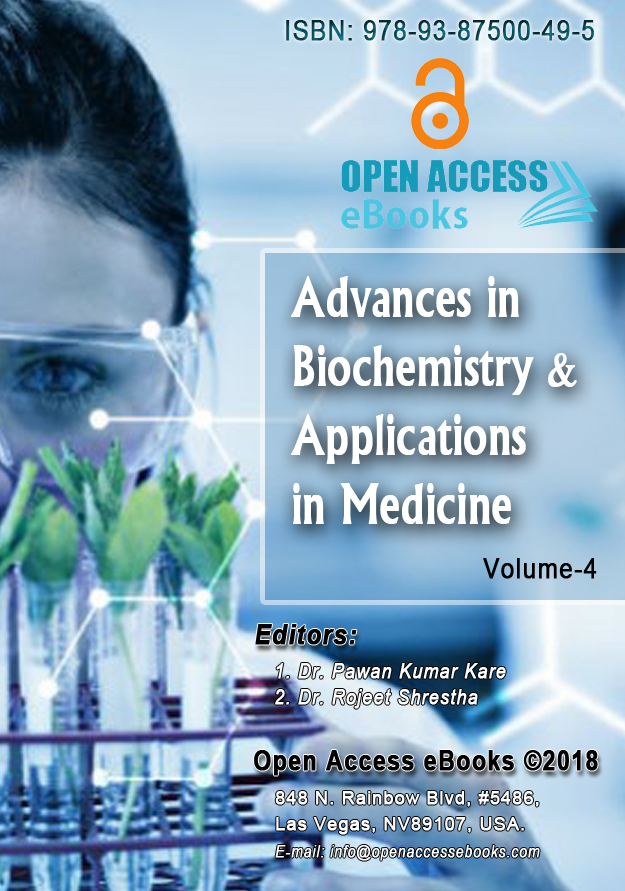List of Chapters
Quality Control in a Clinical Laboratory
Author(s): Vaneet Kaur; Pawan Kumar Kare*; Himanshu Madaan
Quality Control (QC) is carried out in the laboratory to find out and reduce the errors in the analytical phase of the testing system prior to the release of reports of the patients. High quality laboratory results involve commitment to all phases of testing system including pre-analytical, analytical and post- analytical phases. Pre-analytical phase includes those factors which affect the laboratory results prior to the handling of the sample in the clinical laboratory.
Post-analytical factors are those which affect the results after the analytical
phase is complete.
Alpha Amino Acid Metabolism as an Emerging Target in Cancer Stem Cells
Author(s): Ashish Kumar Sahoo; Prem Prakash Kushwaha; Atul Kumar Singh; Santosh Maurya; Neha Kashyap; Shashank Kumar*
Targeting the cancer stem cells can be a novel therapy to combat against proliferating cancer stem cells. Creating obstruction in metabolic pathways by inhibiting enzymes involved in metabolism can be a remarkable strategy to overcome the cancer progression. Development of inhibitor of transporter and various signalling pathways can also be helpful to eradicate growing tumour cells...
Timeliness as a Measure of Lab Quality
Author(s): Dr. Vaneet Kaur; Dr. Pawan Kumar Kare*; Dr. Himanshu Madaan
Timeliness which is expressed as the turnaround time (TAT) is often used by the clinicians as the benchmark for laboratory performance. But this has not been a major focus in clinical laboratories. Improving TAT is a difficult task as it involves all the steps involved from ordering of the test till the final release of the report. In this chapter, all the aspects of TAT including causes of delayed TAT and the steps which can be taken to improve TAT have been discussed..
Some Pharmacological Effects of Drugs
Author(s): Atsafack Serge Secco*; Djimeli Namekong Merline; Sokoudjou Jean Baptiste; Gatsing Donatien
Pharmacology is the study of the properties of drugs and their interaction with living organisms, including viruses. These drugs exert pharmacologically some effects in a biological system called an effector. Such effects are pharmacodynamic, therapeutic, harmful, idiosyncratic or iatrogenic. The pharmacodynamic effect is a measurable, reproducible, functional or organic change. It concerns the action of the drug at elemental levels, such as molecules or cells. The biological eff ects of drugs lead to clinical eff ects that are observed in patients known as therapeutic...
Biochemical, Pathophysiological, and Clinical Characteristics of Covid-19
Author(s): Amin Daemi*, Seyyedeh Touran Hosseini, Mahshid Lotfi, Mojdeh Abolmolouki, Yavar Yousefi, Sahar vahdat, Yusuf Dogus, Zafer Yonden
COVID-19 is a new acute respiratory syndrome caused by the SARS-CoV-2. The pathophysiological processes may be asymptomatic or may cause a wide range of mild manifestations (upper respiratory tract infection) to severe sepsis or even death. COVID-19 mainly demonstrates respiratory manifestations, although it affects other vital systems as well, and its acute form is often associated with long-term complications. Such complex manifestations indicate that SARS-CoV-2 disrupts host immune responses and causes inflammatory, thrombotic, and widespread parenchymal disorders. In this study, the pathophysiology of the COVID-19 is briefly discussed.
Editors:
1. Dr. Pawan Kumar Kare
2. Dr. Rojeet Shrestha
E-mail: biochem-med@openaccessebooks.com
